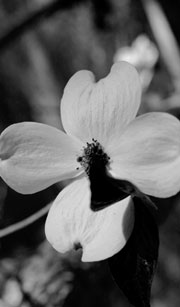 |
||
 |
||

 |
• HOME • GENERAL STORE • NATURAL HERITAGE • HISTORY, CULTURE & CRAFTSMANSHIP |
||||
|
Natural Heritage
• Flowering Dogwood (Cornus florida) |
|||||
| Dogwood Index • Mountain Dogwood Trees & Shrubs Index • Oak • Hickory • Walnut • Catalpa • Loblolly Pine • Red cedar • Elderberry • Sumac • Sassafras • Persimmon • Osage-orange • Mulberry • Witch Hazel • Sarvisberry • Dogwood • Redbud • Crape Myrtle • Mimosa Natural Heritage Index • Fishing • Hunting • Camping • Conservation • Bass Pro Blog • Hills & Hollows • Rivers & Lakes • Springs • Caves • Rocks & Fossils • Trees & Shrubs • Plants & Herbs • Hill Critters • Flyin' Critters • Water Critters • Snakes & Such • Forgotten Critters |
|||
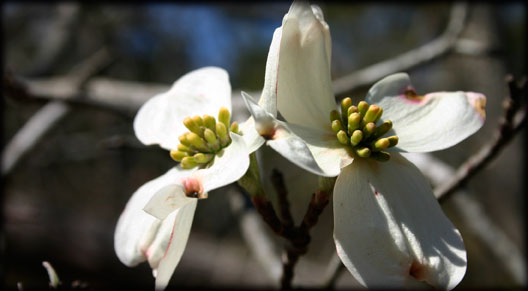
And it is hard to argue against the logic of creating domesticated cultivars, exhibiting earlier, larger blooms and sporting all sorts of enticing colors.
And yet, to see wild dogwoods — uncultivated and unplanned, heralding the spring season on an Ozark mountainside?
It's a reminder that all our horticultural planning pales in comparison with nature.
— by Joshua Heston
April 16, 2009
_______________
The Legend of the Dogwood
Before the crucifixion of Jesus, the dogwood was a great, majestic tree, rivaling even the oaks and cedars of Lebanon.
Because the wood was dense and fine, it was used as lumber throughout the region. As such, it was chosen for the cross upon which Jesus was nailed.
The dogwood, along with all Creation, sorrowed at this. In His compassion, God changed the tree so that it would never again be used for such a purpose.
From then on, it would never grow large enough to be used for a cross. However, in reminder of the crucifixion, the flowers would form the shape of the cross — and on the outer edges, nail prints would appear, stained with both rust and blood.
Lastly, in memory of that day and of the sacrifice of Jesus Christ, at the center of each flower would appear a crown of thorns, in order that those who viewed the tree each Easter would never forget.
_______
Flowering Dogwood (Cornus florida)
Size: 20-30 feet tall; leaves 3-5 inches long.
What to look for: leaves oval, with veins curving toward pointed tip; flowers with 4 showy white petal-like bracts; fruits red, berry-like, in clusters.
Habitat: deciduous forests in well-drained soils.
— page 317, Wernett, Susan J., et al. North American Wildlife. The Reader's Digest Association, Inc., 1986.
_______
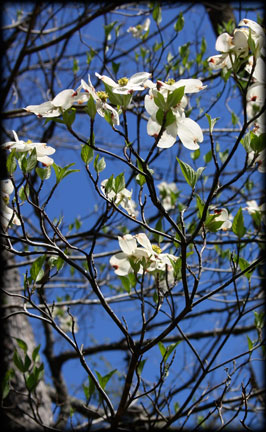
All photo credits: J. Heston. Location: Mincy-Drury Conservation Area / Bear Den Cave Mountain, Taney County, Missouri • SOTO © Archive • 04/10/09, 04/11/09 and 04/15/09

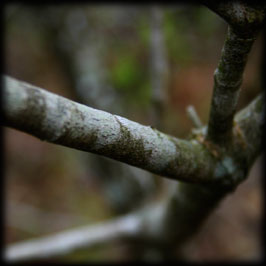
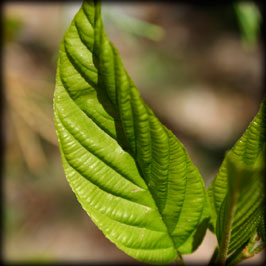
April 16, 2009